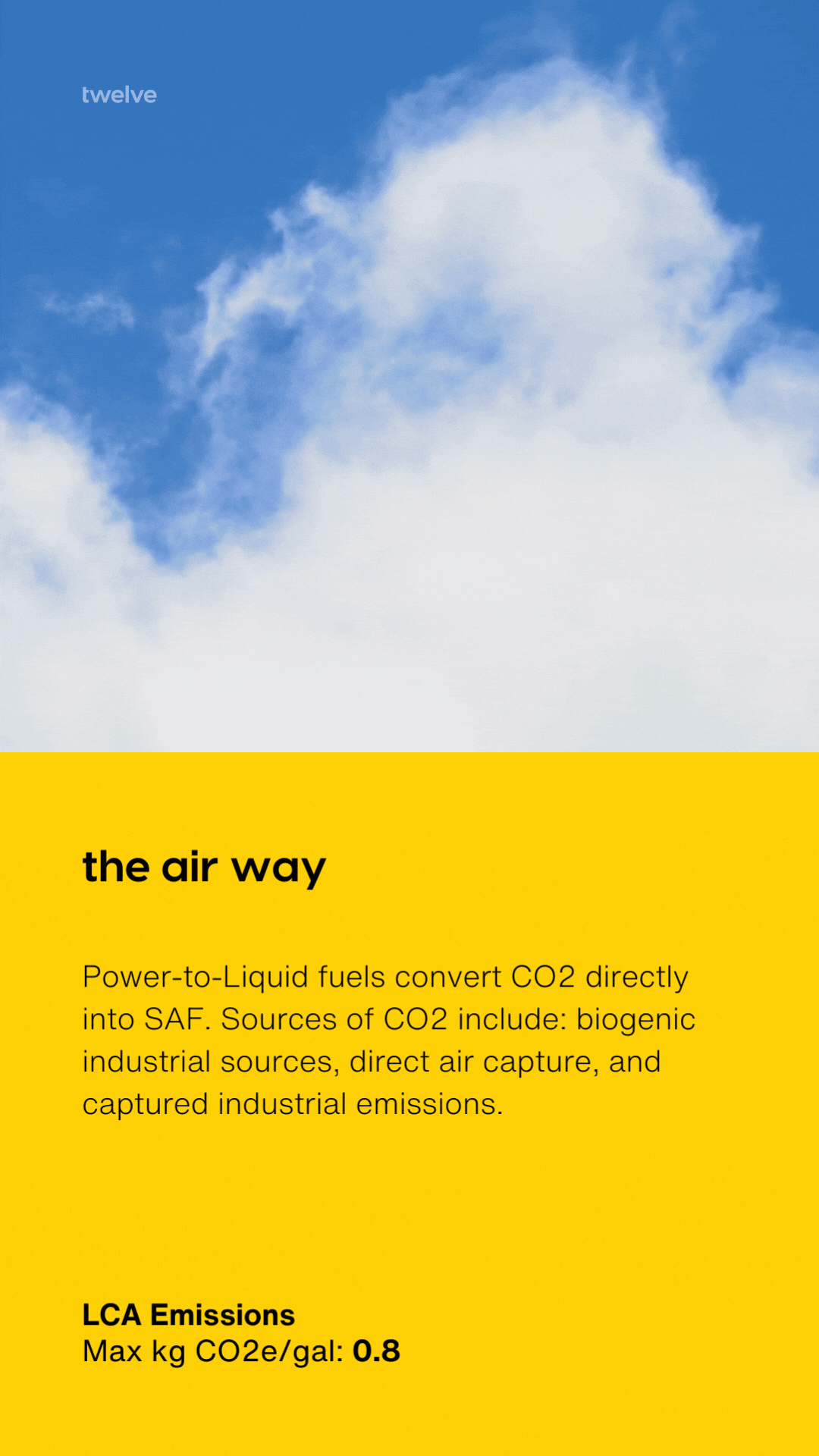The right mix of incentives for E-fuels at the state level can propel the aviation industry towards decarbonization and combat the urgent threat of climate change.

As we strive for a more sustainable future, the aviation industry will play a critical role in enabling the cleaner air travel we need to keep the economy and ourselves moving. Given the urgent need to combat climate change, the aviation sector is actively working to decrease its environmental impact by focusing on sustainable aviation fuel (SAF) development and use. Thoughtful policies implemented at the state level can help drive adoption of these promising and innovative fuels.
The aviation sector is actively working to decrease its environmental impact by focusing on sustainable aviation fuel (SAF) development and use.
In the U.S., the Environmental Protection Agency's recent figures show a remarkable uptick in SAF usage, jumping from 5 million gallons in 2021 to approximately 24.5 million gallons in 20231 . This surge is supported by the Biden Administration's SAF Grand Challenge, which unites various federal agencies to promote SAF usage, targeting 3 billion gallons by 2030 and aiming for 35 billion gallons by 20502 . These goals signify an ambitious 12,148% increase in SAF consumption by 2030, underscoring a national dedication to a climate-positive future.
The federal initiative has sparked a wave of proactive steps in many states. Upcoming discussions in a future Catalyst article will highlight how SAF production in several states such as California and Washington has increased due to wider initiatives like the Low Carbon Fuel Standards (LCFS). More specific policies have been introduced recently to encourage SAF production locally. Illinois, Minnesota, Washington, and most recently Nebraska lead with new laws to boost SAF production, offering significant incentives of as much as $1.50 - $2 per gallon for SAF that cuts greenhouse gas emissions by at least 50% compared to traditional jet fuel. Roughly translated, this provides a value of $2 billion by 2030 and $900 Billion by 20503 . This movement is supported by other states such as Hawaii and Michigan, which are working to adopt similar SAF tax incentives, demonstrating a collective commitment to improving the aviation industry’s sustainability profile. Since the price of SAF is often quoted to be 2-to-3 times the price of conventional jet fuel4 , such incentives go a long way in making SAF more accessible to airlines and corporate customers.
The E-SAF Advantage
State initiatives, particularly financial incentives aimed at spurring in-state production, play a pivotal role in fostering the emerging SAF sector. As state legislators explore strategies to promote SAF production and attract manufacturers like Twelve, it's essential to understand the diversity of SAF production methods. These include Alcohol-to-Jet, which primarily uses crops such as corn; gasification, which utilizes food waste; and Hydroprocessed Esters and Fatty Acids (HEFA), derived from oils and fats.
Yet, the Power-to-Liquid (PtL) method, also known as synthetic or E-fuels, stands out as a particularly promising development in SAF technology, and is the specialty of Twelve. While all SAF production methods contribute to the industry and merit consideration for state-level incentives, they vary in feedstock availability, CO2 abated per gallon of SAF, water and land usage.
PtL technology harnesses carbon dioxide, either recycled from industrial emissions or directly captured from the atmosphere (Direct Air Capture, aka DAC), to produce hydrocarbons. This process taps into an almost limitless carbon source and, when combined with clean electricity, can yield fuels that are significantly cleaner than traditional fossil fuels. Specifically, when clean electricity is used alongside biogenic or DAC-derived CO2, E-fuels can achieve roughly 90% lower emissions than conventional fuels. Additionally, they require substantially less land and water—up to 1,000x times less land and 30x times less water—than other SAF methods, making them a more sustainable choice for the future.
E-fuels are a cutting-edge technology with great promise for sustainable aviation. Via scale and market penetration, there is a clear trajectory toward affordability through increased production and market growth5 . Recognizing the potential of E-fuels to occupy a substantial share of SAF production, it's crucial for state incentives to be accessible for innovations utilizing carbon dioxide in their production.
Aviation is a key driver of global economic activity: over a third of all trade by value is sent by air6 . State legislators and policymakers are in a unique position to champion policies that support this essential industry's transition to greener practices. By adopting a comprehensive, straightforward approach that includes E-fuels, while ensuring simplicity and ease-of-entry, they can significantly contribute to the decarbonization of aviation—without sacrificing access to the air travel that makes up a key pillar of our modern transport networks for goods and people.
Aviation is a key driver of global economic activity: over a third of all trade by value is sent by air.
The gravity of the climate crisis is undeniable, reaching beyond mere environmental considerations to affect every aspect of society. Swift and resolute action is essential to mitigate its consequences and secure our planet for future generations. This juncture demands unified action and the utilization of all available resources, including E-SAF, to pave the way for a sustainable future for all.
3 Calculated using an incentive value of $2 per gallon for SAF and industry targets of reaching SAF production of 1 Billion gallons by 2030 and 450 Billion gallons by 2050.
5 See: https://www3.weforum.org/docs/WEF_Clean_Skies_for_Tomorrow_Power_to_Liquid_Deep_Dive_2022.pdf










